2023 Hyundai Ioniq 6 Review and Test Drive
Hyundai introduces another sensational electric vehicle with unique style.
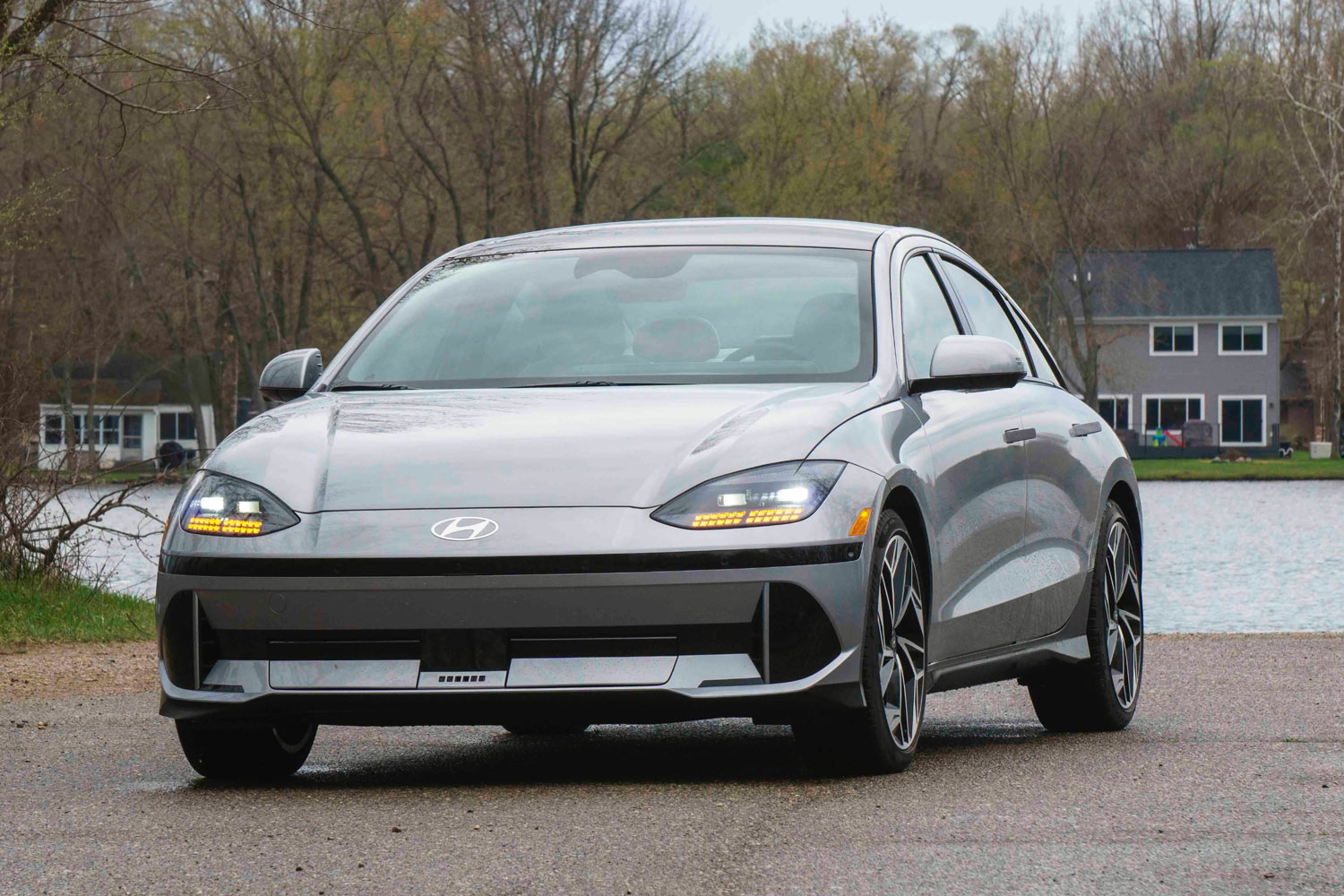 Perry Stern
Perry Stern
Hyundai has been steadily electrifying its vehicle lineup, and it's been just over a year since the Korean brand introduced its first dedicated electric vehicle (EV), the Ioniq 5. The Ioniq 5 was one of the first Hyundai Motor Group vehicles built on the Electric-Global Modular Platform (E-GMP), which also forms the basis of Genesis and Kia EVs. Now, Hyundai is rolling out its second E-GMP vehicle, the 2023 Hyundai Ioniq 6 sedan.
As the name implies, the Ioniq 6 is a step up from the Ioniq 5. It features a distinctive design, a roomy interior, premium features, impressive performance, and up to 361 miles of driving range. This new EV also boasts excellent aerodynamics for maximum efficiency, creating a look that may take some getting used to among interested EV shoppers.
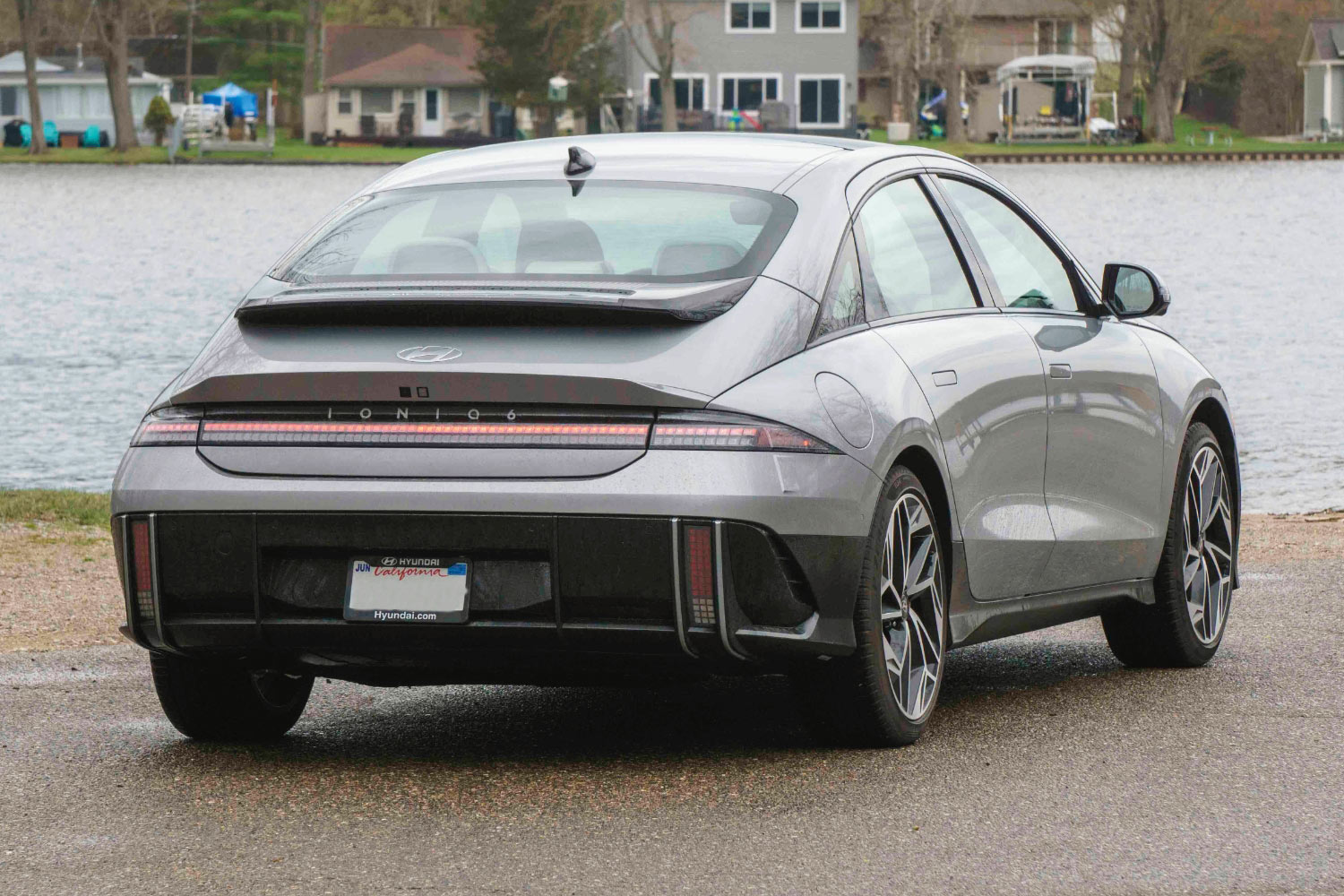 Perry Stern
Perry Stern
With the market favoring crossovers instead of traditional sedans, the Ioniq 6 has few direct EV competitors. Most battery-electric sedans are higher-priced luxury models, but the Ioniq 6 is worth checking out if you're already considering the BMW i4, Polestar 2, or Tesla Model 3.
The 2023 Hyundai Ioniq 6 comes in SE, SEL, and Limited trim levels, with base prices ranging from the mid-$40,000s to the mid-$50,000s. Those prices include the destination charge to ship the electric sedan from the Asan factory in South Korea that builds it to your local dealership.
For this Ioniq 6 review, Hyundai invited me to Detroit, Michigan, and paid my travel, food, and lodging expenses, where I test-drove the 2023 Hyundai Ioniq 6 Limited with all-wheel drive. Carpeted floor mats were its only factory option, bringing the manufacturer's suggested retail price to $57,425, including the $1,115 destination charge.
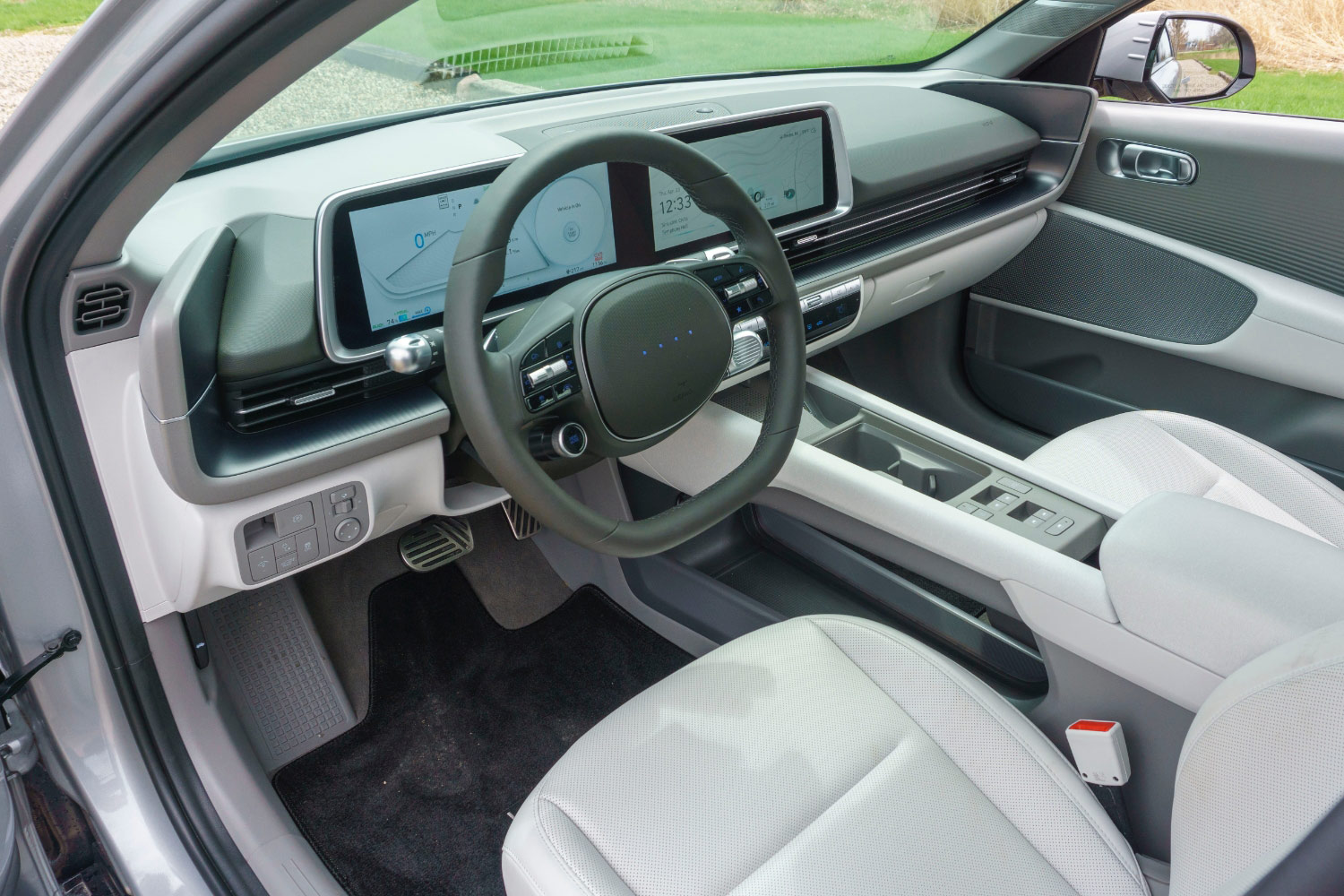 Perry Stern
Perry Stern
Sleek Design and Lots of Legroom in the 2023 Hyundai Ioniq
The new Ioniq 6 doesn't look like anything else in Hyundai's lineup or any other car you can buy. There are hints of Porsche Taycan up front, where a low, short nose arcs up into the windshield. Around the back, the fastback styling, spoiler, and taillight shapes recall the 1990s-era Infiniti J30t.
The Ioniq 6 is dramatic and represents an acquired taste. But the form follows function, and there's a reason for the Ioniq 6's sleek design. This Hyundai boasts a very low 0.22 drag coefficient, aided by active air flaps below the front bumper and flush door handles. The slippery aerodynamics translate into better efficiency and longer driving range.
The Ioniq 6 is about the same length as Hyundai's midsize Sonata sedan, but the EV's wheelbase is five inches longer. The stretched wheelbase, the E-GMP skateboard platform, and a flat interior floor translate into a roomy cabin.
In the Ioniq 6 Limited, Hyundai wraps the seats in H-Tex, a synthetic leather that looks and feels like the real thing. In addition, this model's seats are heated and cooled and feature adequate bolstering, good comfort, and head restraints that jut forward to provide proper neck support. Front seat occupants enjoy plenty of storage area, too, with a sizable covered bin on the center console, dual cupholders, and ample open space below the console that can easily fit a bag of takeout or a purse.
Drivers face a single display housing a 12.3-inch digital instrumentation screen and a 12.3-inch touchscreen infotainment system, giving the Ioniq 6's interior a clean, high-tech look. Simplicity rules within the cabin, which conveys a premium look and feel with quality materials and touchpoints. Adding to the uncluttered style, Hyundai locates the power window buttons in the center console, leaving just the door release handles on the door panels. The plus symbol on the accelerator and the minus symbol on the brake pedal are cute touches.
Unlike many car companies who seem intent on eliminating every physical control from a car's cabin, Hyundai provides physical buttons for quick access to the map, navigation system, and media choices, with knobs for stereo volume and radio tuning. Hyundai keeps the car's climate functions separate from the infotainment system, rendering them within a stylish display featuring intuitive soft-touch controls.
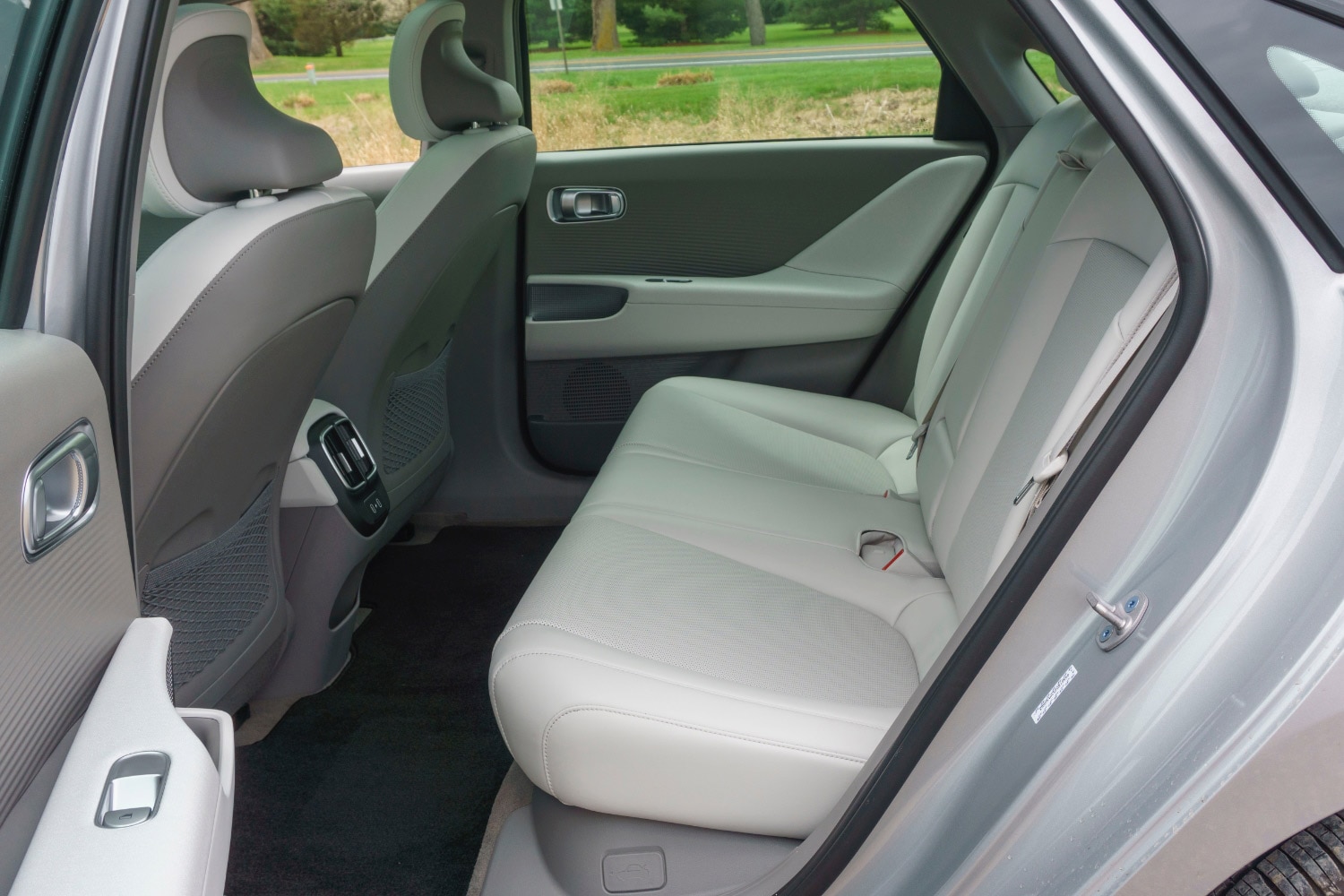 Perry Stern
Perry Stern
Rear-seat passengers will be surprised by how much legroom the Ioniq 6 provides, thanks to the flat floor. Even the middle seating location isn't a bad place to sit, although the seat bottom is stiffer than the more comfortable outboard seats. Dual USB-C ports, air-conditioning vents, and seatback storage add to the pleasant riding experience. I wouldn't mind sitting in the Ioniq 6's back seat for a lengthy road trip.
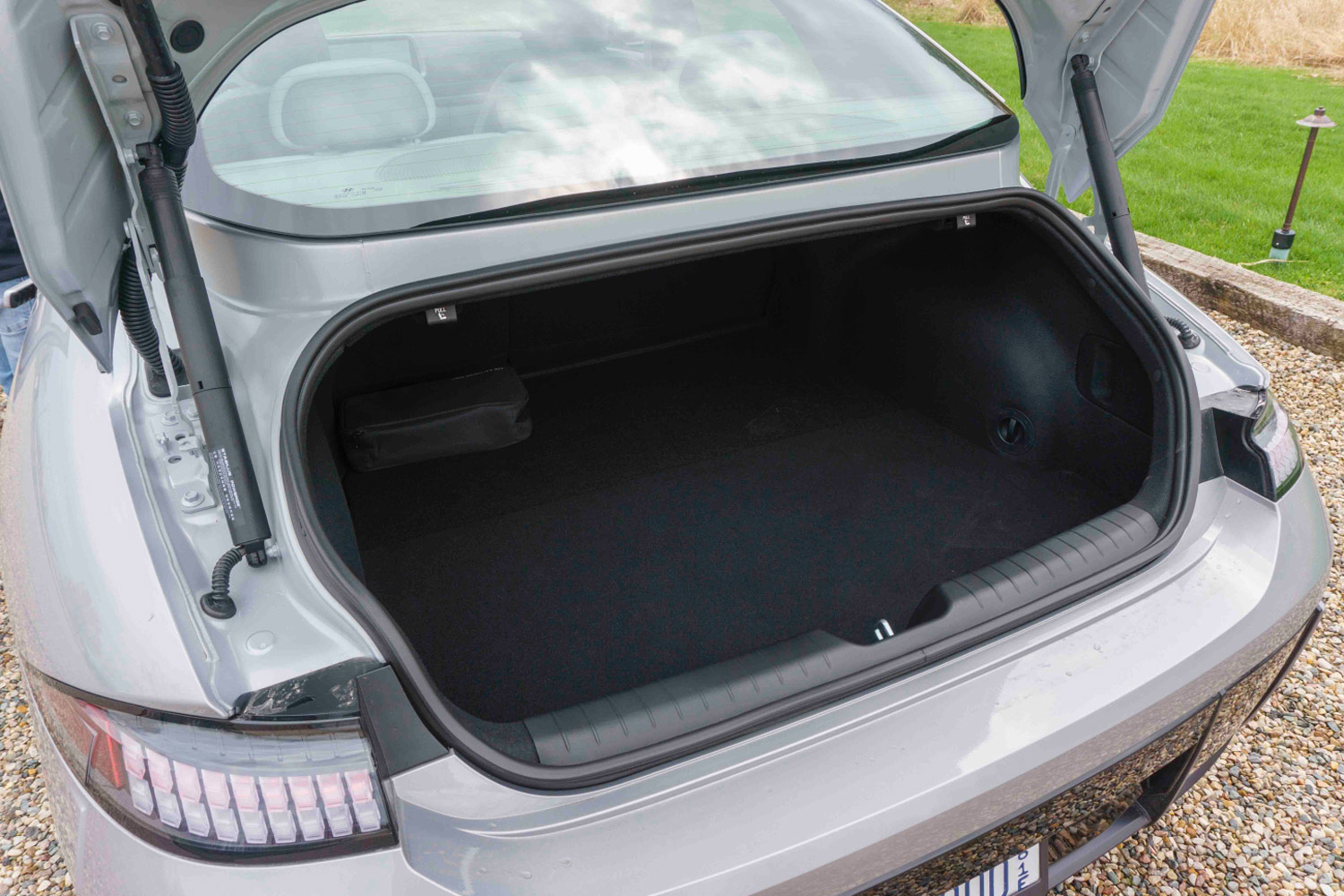 Perry Stern
Perry Stern
While the ride will be comfortable for that road trip, there might not be enough space for the accompanying luggage in the trunk. With only 11.3 cu-ft of space — the Sonata provides 16 cu-ft — and a relatively small opening, the Ioniq 6's cargo-carrying ability is limited. Still, there is room for a few smaller bags or a weekly haul of groceries. The Ioniq 6 also has a frunk, but with just 0.5 cubic feet of space, it can only store smaller items.
 Perry Stern
Perry Stern
Ioniq 6 Sports Intuitive Tech Controls
As with other Hyundais I've recently driven, the Ioniq 6 has an easy-to-use and intuitive infotainment system. Icons are large, and you can swipe through multiple pages like a tablet computer. In addition, the system boasts a fast reaction time. A pleasing default home page shows the time and date, location and weather, the music selection, and the battery's state of charge. This information overlays a simplified navigation map, which is more for decoration than actual use.
For a brand-new car, the need for a cable to run Apple CarPlay and Android Auto is disappointing. However, my Samsung Galaxy S21 quickly connected once plugged in, and Android Auto started right up, the display utilizing the entire screen.
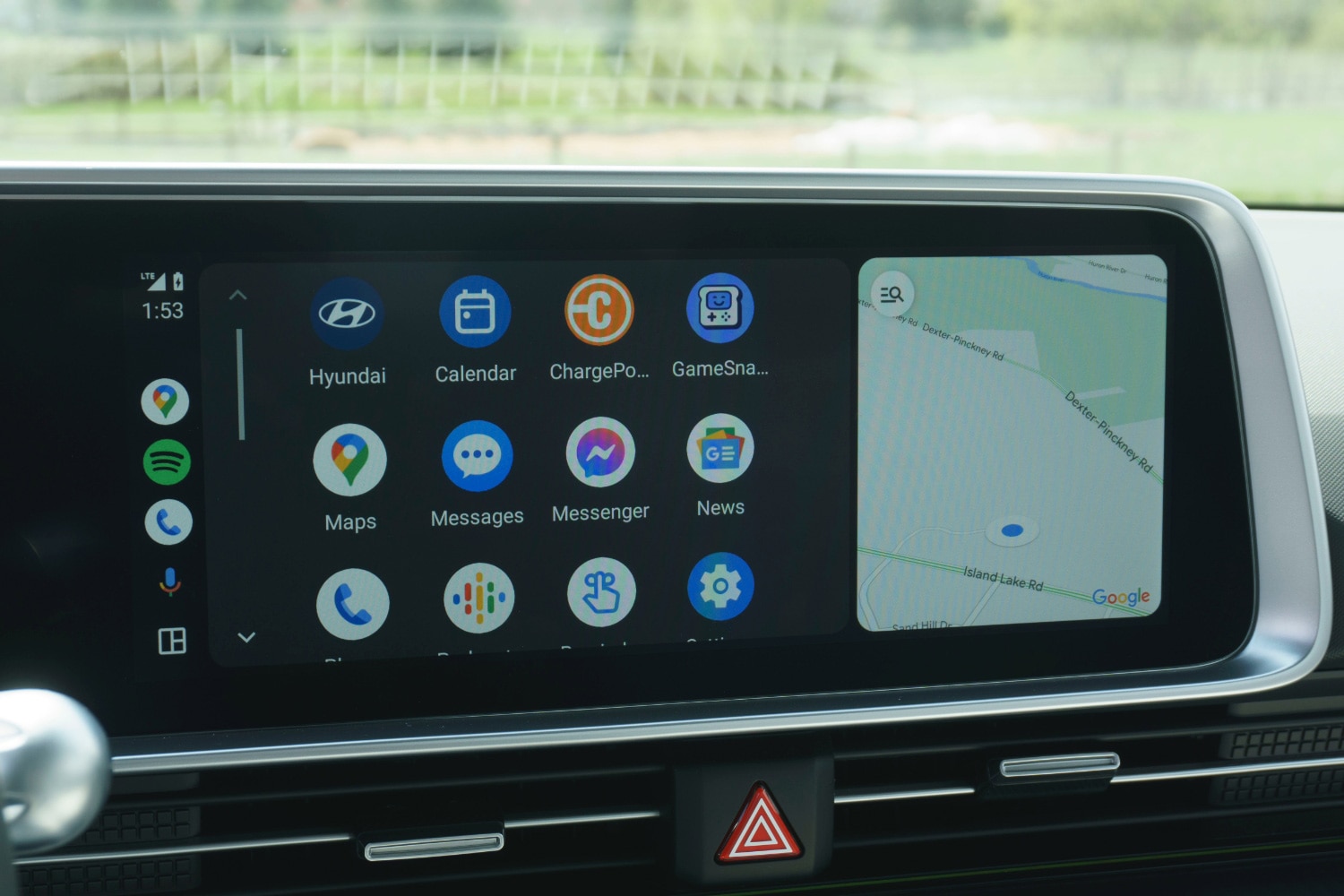 Perry Stern
Perry Stern
Most of the time, you'll interact with the Ioniq 6's infotainment system via the touchscreen. However, there is a voice recognition system. Activated via a button on the steering wheel, the voice control system is not quite as advanced as those found on some European models, but it worked well enough to understand my request to tune the radio and to program a destination into the navigation system.
It may be missing items like wireless smartphone connectivity and conversational voice recognition, but the Ioniq 6 doesn't skimp on advanced driving assistance systems (ADAS). This new electric Hyundai comes standard with the expected long list of active safety features, including items like automatic emergency braking with car, pedestrian, and cyclist detection, as well as Junction Turning, which stops the car from making a turn across traffic if it's not safe to do so.
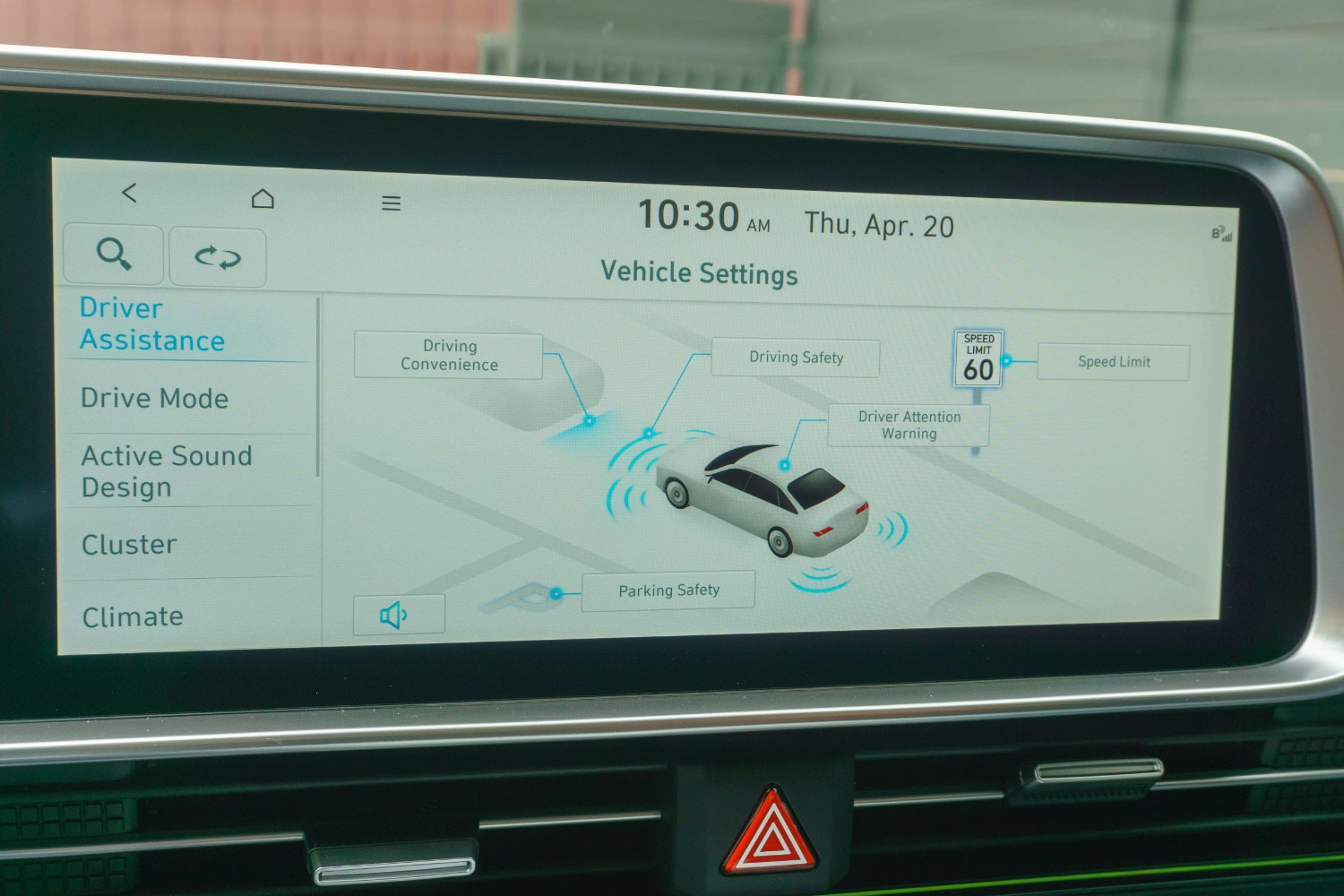 Perry Stern
Perry Stern
The Ioniq 6 Limited features the latest version of Hyundai Highway Driving Assist (HDA II). Working with the adaptive cruise control, the HDA II system maintains speed and the distance from the vehicle ahead while keeping the car centered in the lane. The system can also automatically change lanes when you use the turn signal to prompt the action. However, this is not a hands-free system, and it will provide warnings and eventually disengage if the driver's hands leave the steering wheel.
Designed for use on highways, the HDA II system works well, demonstrating smooth and confident operation even as the road curves with traffic near the vehicle. It feels like it should be able to take over all of the driving tasks, but Hyundai isn't there yet.
As of this writing, the Ioniq 6 has no crash-test ratings from the Insurance Institute for Highway Safety (IIHS) or the National Highway Traffic Safety Administration (NHTSA). Check the
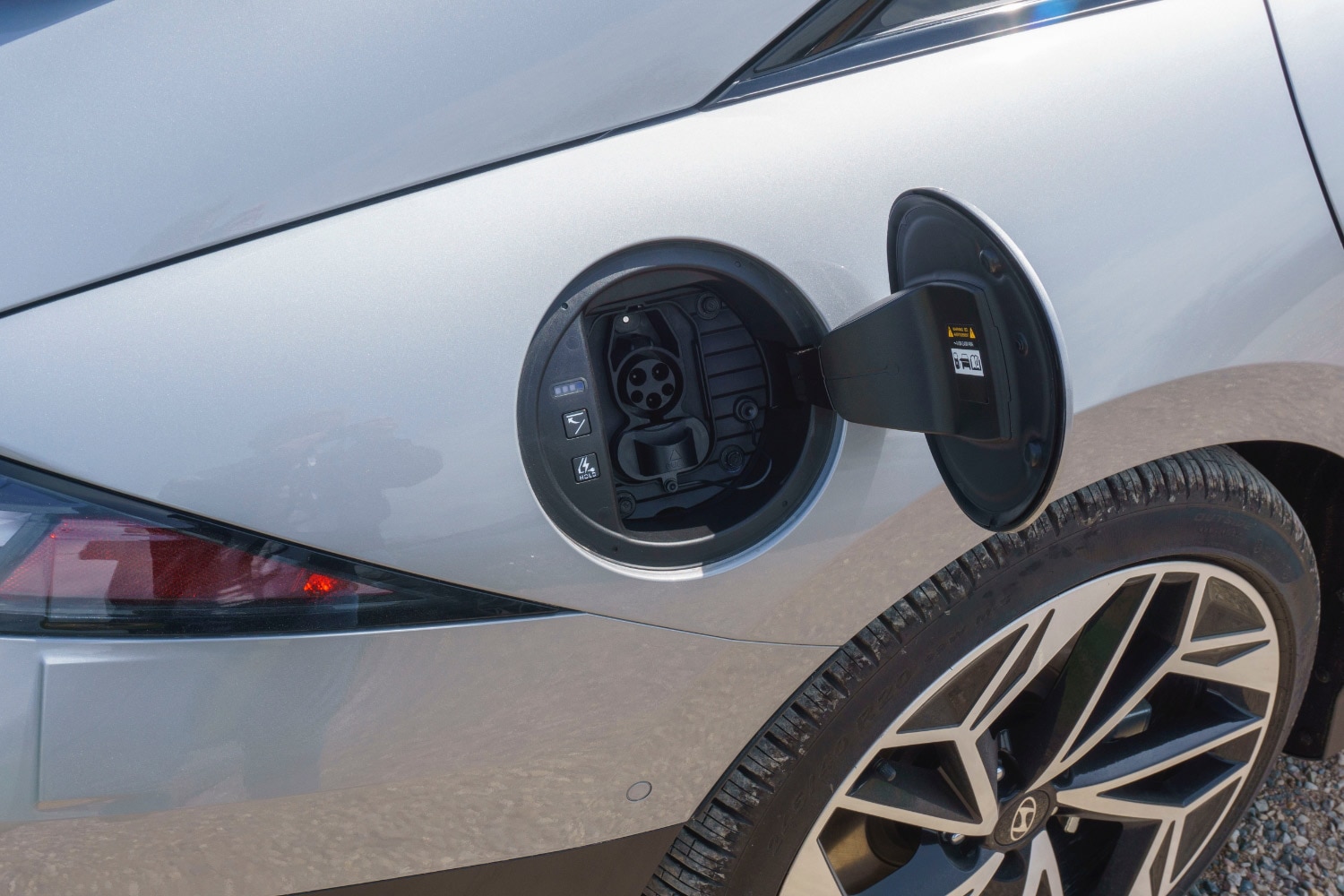 Perry Stern
Perry Stern
One-Pedal Driving Is Possible in the Ioniq 6
My 2023 Hyundai Ioniq 6 Limited test vehicle had a dual-motor all-wheel-drive system with 100 horsepower at the front wheels and 220 horsepower at the rear, for a total output of 320 horsepower and 446 lb-ft of torque. According to Hyundai, the front motor disconnects when not needed, increasing the car's overall driving range by 6 percent.
The EPA says the 2023 Hyundai Ioniq 6 Limited with 20-inch wheels should get 103 MPGe (33 kWh per 100 miles). However, during my evaluation in southeast Michigan, the trip computer indicated that I used 3.2 miles/kWh (31.25 kWh/100 miles) or 108 MPGe.
When I started the day, my Ioniq 6 was at a 99 percent charge and showed 315 miles of range. This indicated range was considerably higher than the EPA-estimated range of 270 miles, and it turned out the estimate was more accurate than the figure in the car's display. After driving about 80 miles, the Ioniq 6 showed 199 miles of range remaining.
 Perry Stern
Perry Stern
While an all-wheel-drive Limited rolling on 20-inch wheels delivers impressive figures, the Ioniq 6 can do better. With SE trim and a single rear-mounted motor, the car gets a rating of 140 MPGe (24 kWh/100 miles), making it one of the most efficient vehicles on the road. This version's estimated range is 361 miles.
I didn't have or need the opportunity to charge the Ioniq 6. However, Hyundai says the dual-motor, long-range battery electric drive system can charge from 10 to 80% in just 18 minutes when using a DC fast charger delivering the Hyundai's maximum 235 kW. The same task takes about 25 minutes on a 150-kW DC fast charger, gaining about 46 miles in five minutes. A Level 2 charger, typical for a home charging station, will bring the Ioniq 6 to a full charge in a little more than seven hours.
The driver can choose between four brake regeneration levels using paddles on the steering column. They range from full coasting to maximum regeneration, and Hyundai refers to the latter as i-Pedal. With i-Pedal, you can engage in one-pedal driving. In other words, it's possible to slow to a complete stop without using the brake pedal. This method of driving takes some getting used to. Still, smooth one-pedal driving is possible with some practice.
The Ioniq 6 also has an automatic regenerative setting that adjusts the coasting level based on the vehicle ahead. However, I wasn't as comfortable using the automatic setting as it was harder to predict when and how much the car would slow.
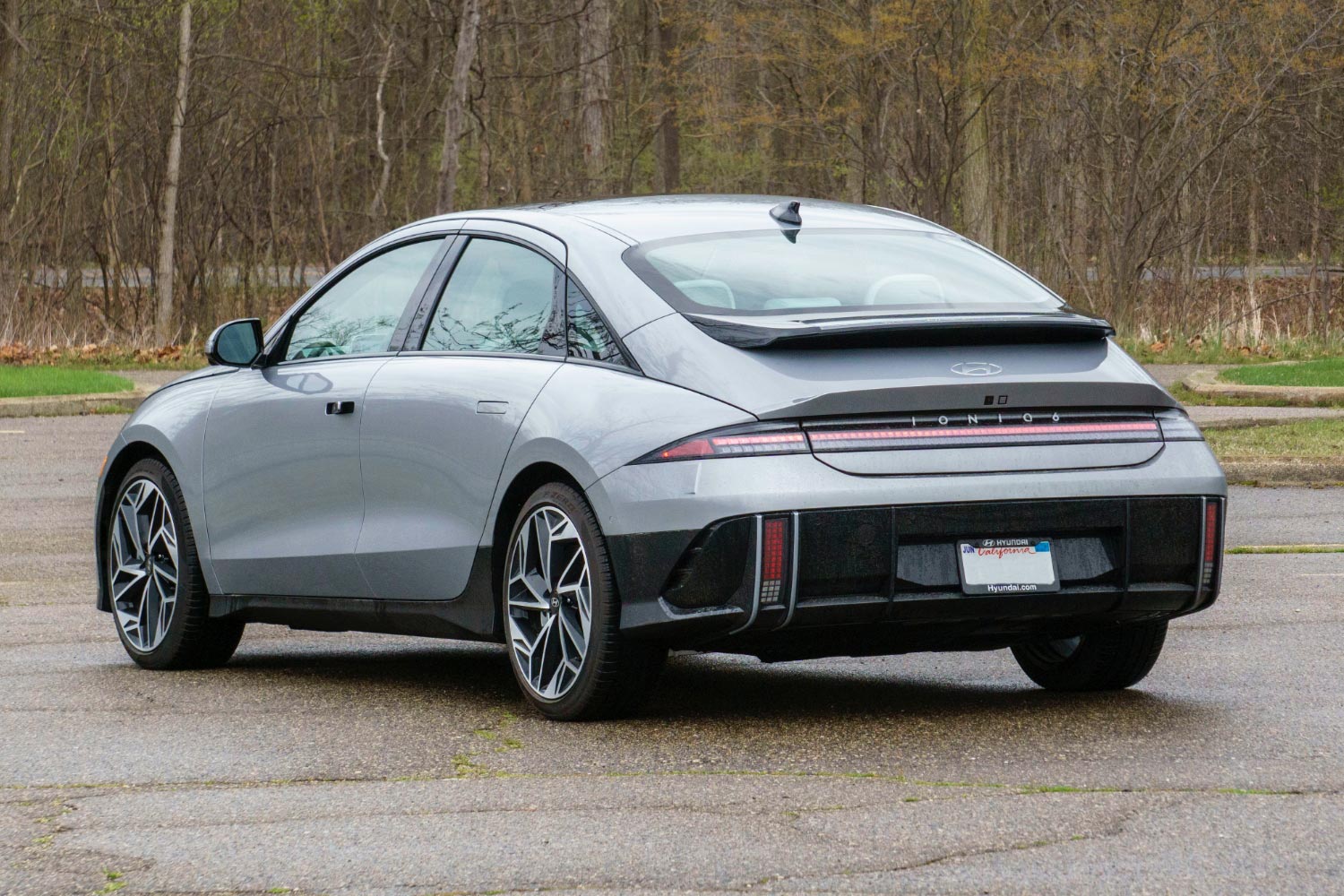 Perry Stern
Perry Stern
From the moment I set off in the Ioniq 6, it was immediately noticeable how quietly and smoothly this car drives. Electric cars generally have these qualities, but the Ioniq 6 excels. Power delivery is consistent and easy to modulate, and when you need to move quickly, full-throttle acceleration will push everyone back in their seat. Hyundai claims the Ioniq 6 will reach 60 mph in about five seconds.
Getting up to highway speed is no problem for the Ioniq 6, with strong acceleration up to 70 mph and beyond if you're not paying attention. Once at speed, this electric Hyundai delivers a solid, comfortable ride, remaining quiet with almost no wind or road noise permeating the cabin.
The Ioniq 6 is not what I would consider a sport sedan, but it performed pretty well on the twisty roads northwest of Detroit. The steering response is quick and direct, and with the powerful dual-motor setup, the Ioniq 6 always has power on tap for a quick exit from a turn. The suspension keeps the ride comfortable but is firm enough so the car remains stable in the corners.
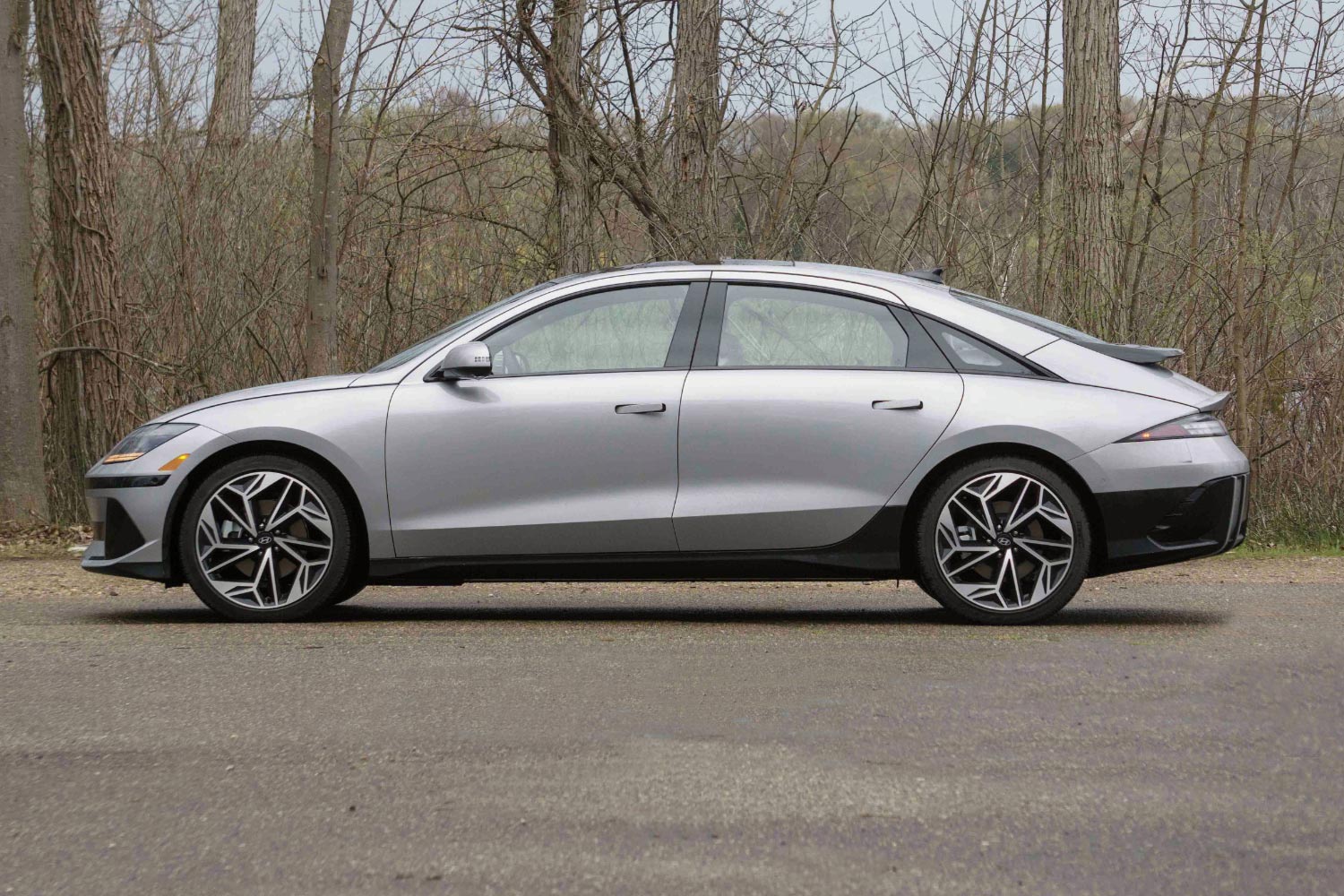 Perry Stern
Perry Stern
Is the 2023 Hyundai Ioniq 6 a Good Electric Car?
With the successful Ioniq 5 and the all-new 2023 Ioniq 6, Hyundai has proven itself as a strong player in the growing electric vehicle market.
With a comfortable, roomy interior and an easy-to-use infotainment system, the Ioniq 6 performs admirably as a daily driver. In addition, premium materials and a cleanly designed cabin make this newest Hyundai competitive with electric sedans costing much more. In addition, the Ioniq 6 is enjoyable to drive and pleasant to ride in, and the latest ADAS makes this electric vehicle a great value.
While its unique styling may put off some buyers, the new 2023 Hyundai Ioniq 6 is worthy of consideration by anyone in the market for a new electric car.
Written by humans.
Edited by humans.
 Perry Stern
Perry SternI have loved cars and trucks since childhood, and that fascination with anything that drives is just as strong today. As a teenager, I knew I wanted to become an automotive journalist, and during the past three decades, I have driven, written about, and photographed all manner of automobiles ranging from affordable econocars to exotic supercars. With the idea that there is a perfect car, truck, or SUV for everyone, my goal is to help consumers determine the right one for their wants and needs.
Related articles
View more related articles